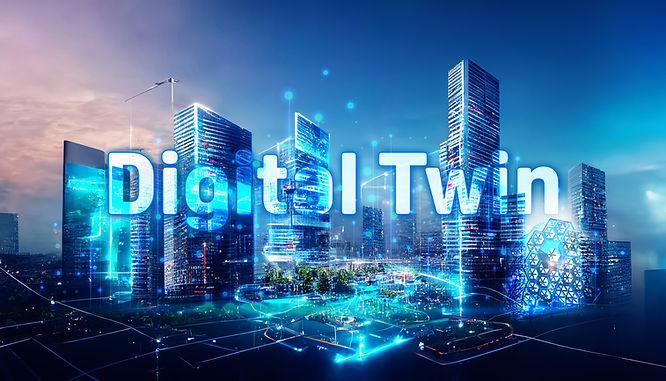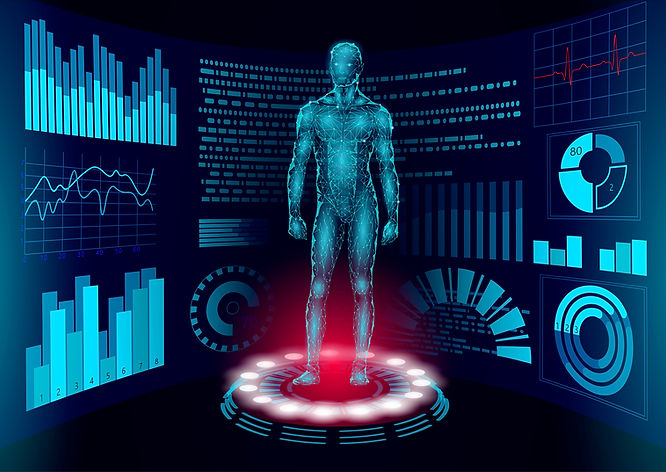4 Examples of Digital Twins in Real-life Applications

Emerging from NASA’s space exploration initiatives in the 1960s, digital twin technology initially involved replicating spacecraft on Earth for study and simulation purposes. Today, this concept has matured into a transformative force, revolutionizing industries by seamlessly incorporating real-time data and artificial intelligence, providing a more streamlined and cost-effective approach to business strategy implementation.
What is a Digital Twin?
A digital twin is a dynamic virtual counterpart to a physical object or system, offering a comprehensive representation that extends beyond a mere 3D model. In essence, digital twins leverage their virtual representation to encapsulate the intricate physics of structures and the ever-changing conditions.
Examples of digital twins currently being used across different industries
1. Manufacturing

Manufacturing sees a surge in efficiency with digital twins optimizing machine layouts, assembly flows, and employee interactions through detailed spatial mapping of factories. Robotics simulation prioritizes safety by training robots in secure simulated environments.
General Electric leverages digital twins to enhance the production of intricate machinery, encompassing aircraft engines and gas turbines.
Currently, several technologies boost digital twin applications, delivering prompt 3D rendering, such as Polygon Streaming in VIVERSE. These virtual counterparts function as vigilant monitors, optimizing equipment performance, reducing downtime, and reinforcing the overall reliability of digital twin technology.
2. Smart City

The post-pandemic world introduces a new era of virtual travel, allowing individuals to explore the globe through immersive experiences. VIVERSE, in partnership with the Kaohsiung City Government, created digital twin models of iconic venues like the Kaohsiung Arena and Kaohsiung Museum of Fine Arts, and more.
Worldwide visitors could navigate venues and explore exhibitions from the comfort of their home. Drawing inspiration from renowned smart city implementations, such as the digital twin cities of Singapore, Kaohsiung is poised to unlock unprecedented avenues for progress. Just as Virtual Singapore has revolutionized urban governance by providing a dynamic platform for scenario analysis and predictive modeling, Kaohsiung possesses the potential to leverage its digital twin to create a resilient and sustainable urban ecosystem.
3. Healthcare

Digital twin of the human body
By merging data obtained from medical imaging, genetic data, and wearable devices, healthcare institutions can develop personalized digital twins of patients, enabling a thorough comprehension of their physiology for more targeted treatment plans. Incorporating digital twin technology into the diagnostic process empowers healthcare professionals to simulate diverse scenarios, identifying potential issues without interrupting actual patient care. This enhances diagnostic accuracy and minimizes unnecessary tests and procedures.
Digital twin of the healthcare facility
Integrating historical and real-time data from hospital operations and the surrounding environment (e.g., COVID-19 cases and car crashes) into digital twins empowers hospital management to identify bed shortages, arrange staff schedules, and enhance operational room efficiency. The data-centric approach of digital twin technology in healthcare improves resource efficiency, optimizes hospital and staff performance, and reduces costs. Notably, a review study underscored the significant reduction in treatment time for stroke patients achieved through the strategic use of digital twins.
4. Sports and Entertainment

(Image Source: NBA)
The Charlotte Hornets collaborated with MeetKai, utilizing AI-driven digital twin technologies to reimagine the Charlotte Hornets Fan Shop. Named ‘Buzz City,’ it’s the first immersive store for the NBA, bringing new opportunities for fan engagement. In the virtual eCommerce space, sports fans can explore and shop for jerseys, apparel, and souvenirs. They get to transform into 3D avatars, wander the shop, and interact with fellow fans. Additionally, virtual try-on technologies enhance the experience, allowing fans to test products in different parts of the online store.
Recap & Summarize
The digital twin examples highlighted in healthcare, manufacturing, sports and entertainment, and smart cities merely scratch the surface, showcasing the broad applicability of the digital twin technology. It is crucial to approach the development of digital twins with a heightened awareness of privacy concerns, particularly in industries where confidential data is involved. Striking a balance between leveraging the benefits of digital twin technology and respecting privacy will be essential for its integration into various sectors.
To sum up, we can expect a rise in inventive innovative applications across industries such as construction, retail, and infrastructure. Recognizing the unique needs and scenarios within each sector, VIVERSE‘s customizable scene-building technique enhances the effectiveness of the digital twin through its comprehensive solution.